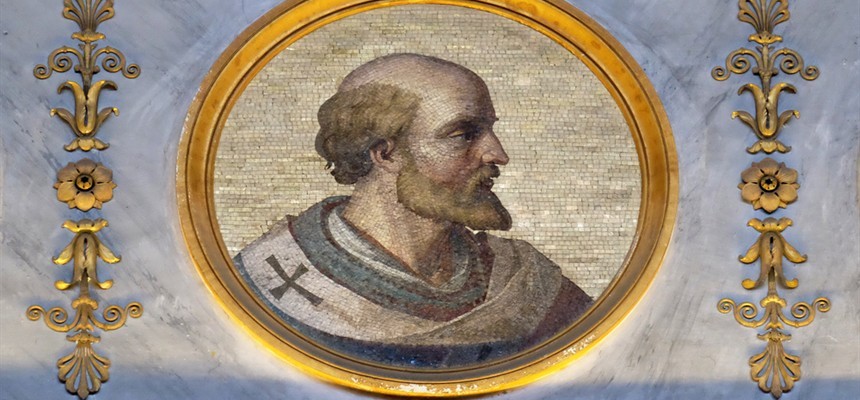
You may recognize Sylvester II under his given name, Gerbert of Auxillac, the phenomenal scholar of the early Middle Ages.
Gerbert was born around 946 in Bellise, south central France. At around 17 years of age, he entered the Monastery of St. Gerald of Auxillac to study. Four years later, Count Borrell II of Barcelona, a young man of Gerbert’s age, visited the monastery. The abbot, having already become impressed with Gerbert’s intellect, asked the count to take Gerbert back to Barcelona so that the student could study math. Barcelona was in Catalonia, the Christian buffer state between France and Moslem-held Spain. The abbot’s goal was for Gerbert to gain knowledge or Arabic learning, at its zenith, at that time.
The young Gerbert studied under the direction of Bishop Atto of Vich. He had at his disposal the Catalan and Cordoban monasteries where thousands of manuscripts covering subjects from science to philosophy sat. He was introduced to Hindu-Arabic digits (what we use now). He was introduced to an abacus and improved on it, reintroducing a concept that had died with the Roman Empire. The abacus became popular in the next century. Over the years, Gerbert developed an armillary sphere, showing how constellations were positioned and seen from earth. He got the longitudes and latitudes almost right and the equator exact. At some time later, the future pope invented a timepiece. The first mechanical one.
After being in Catalonia for two years, Borrell II took Gerbert with him on a pilgrimage to Rome. There they met Pope John XIII and Emperor Otto I. The pope was so impressed that he convinced Otto to hire Gerbert to tutor his son, Otto, at Reims.
As the young man got older and did not need a tutor, Gerbert realized he did not have a sufficient knowledge of logic, so he began to study under the famous logician Gerann of Reims. Gerbert soon got an appointment to teach at the cathedral school. He was also ordained at some point in his sojourn there.
Otto I died in 973 and his son became the emperor. He appointed Gerbert abbot of the monastery at Bobbio in 980. Unfortunately, Gerbert’s lack of administrative skills did not endear him to the monks, clerics and nobles, some of which owned annual stipends. There were thefts and refusal of payments. When he warned European leaders about Henry of Bavaria’s political ambitions, he learned about plots against him and the emperor. It was time for him to leave Bobbio and go back to Reims. With Otto II dying unexpectedly in 983, the new emperor, Otto III, was only a toddler. Gerbert was protective. Hearing that the king of France wanted to take some of Otto’s land, Gerbert joined with a contender to the throne, Hugh Capet, becoming his secretary and advisor.
The archbishop of Reims saw Gerbert as his successor. When he died in 989, Gerbert assumed he would be nominated. Hugh Capet chose Arnulf, instead. For nine years, politics leading to near civil war put Gerbert out of contention, then into the archbishopric, then out again. He tutored the young emperor, but hoped for more.
In 998, Gerbert was appointed archbishop of Ravenna. A year later, Pope Gregory V died. Supported, or pushed, by Otto III, now a young man, Gerbert was elected the new pope. He took the name Sylvester. Almost the first thing he did was confirm the position of Arnulf as the archbishop of Reims. In a synod, he took a stand against simony and the concubinage of clergy. He insisted that only capable men of spotless lives could be bishop.
This was not a happily ever after. Two years after ascending to the throne, 1001, there was a revolt in Rome. Sylvester and Otto III, who was in Rome at the time, had to flee to Ravenna. Otto, with his army, led two unsuccessful expeditions to regain control of Rome. But he died in a third attempt in 1002. Sylvester returned soon after. But the rebellious nobles remained in control. I would not be surprised if he was in house arrest for most of his remaining time. He died within the year, May 12, 1003.
Pope Sylvester was buried in St. John Lateran.

Recent Comments